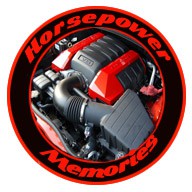Lee Iacocca and the Ford Mustang
Lee Iacocca was born in Allentown, Pennsylvania on October 15, 1924. Iacocca’s business savvy came from his father who taught a young Iacocca the value of a dollar and how to be successful in business. Iacocca later enlisted in the military, but was rejected because of a bout of rheumatic fever as a child.
Iacocca was quite educated. He graduated early from Lehigh University and then went on to earn a master’s degree in engineering from Princeton. Iacocca was only 22 years old when he joined Ford in 1946 as an engineer. He soon moved to sales at Ford’s Philadelphia district. He climbed the corporate ladder fairly quickly and became Vice President and General Manager of Ford in 1960 at age 36.
While at Ford, Iacocca saw the need for an affordable sports car that would appeal to the baby boomer generation. He enlisted two of Ford’s top talents, product advisor Hal Sperlich and stylist Gale Halderman, to design what would be called the “Cougar”. Soon afterwards, the car became known as the “Mustang”, after the World War II fighter plane. Now came the arduous task of convincing the board and, most critically, Henry Ford II to build it. Iacocca was a born salesman, so his pitch to build the Mustang was given the green light by Henry Ford II to move forward. Now, the race was on to get the car ready for production. Iacocca was given a meager budget for development and only 18 months to bring the car to market. Unfazed by such limitations, Iacocca and his team soldiered on to bring the car to fruition.

Ford’s introduction of the Mustang was one of the most ambitious and elaborate ever conceived. The car was revealed by Iacocca to the public at the New York World’s Fair on April 17, 1964. The night before the introduction, Ford ran Mustang commercials on the “Big Three” television networks. The next day, Ford ran huge one-page ads in over 2,500 newspapers. Ford also placed Mustangs in lobbies of a couple hundred Holiday Inns and in the atriums of several major airports. In addition, billboards in over 170 markets were placed to generate interest in the Mustang.


After the World’s Fair debut, interest in the Mustang reached a fever pitch. A tidal wave of orders poured in by buyers wanting to get their hands on a Mustang. In fact, over 20,000 orders were placed by customers wanting to put a Mustang in their driveway. Dealers were amazed at what extremes drivers would go to put a Mustang in their driveway. From a customer sleeping in a car until his down payment cleared so it wouldn’t be sold out from under him to a dealer having to lock his doors to keep mobs of curious onlookers out of his showroom. It’s also been estimated that over four million folks crammed into Ford showrooms to get a peek at the new Mustang.


The pandemonium that resulted from the Mustang’s introduction made Iacocca something of a celebrity. Iacocca landed on the cover of both Newsweek and Time magazines in the same week. This was the first time the two competing magazines featured the same cover story.

It was a sales success, selling 419,000 cars during the 1965 model year. In less than two years after its launch, the one-millionth Mustang rolled off the assembly line. The Mustang sold so well during its first two years of production, it beat out the all-time automotive record set previously by the Ford Model A. Part of the Mustang’s allure was its price. The base price was $2,368, or $20,000 in today’s dollars. Another great feature of the Mustang was its list of standard features. Even the lowest priced Mustang came equipped with bucket seats, sport steering wheel, and 5-dial instrument cluster. Other standard amenities include windshield washers and electric wipers, low-profile tires, and full wheel covers.
Studies showed that the average age of a Mustang buyer was 31, with greater than half of those buyers in the 20 to 34 age range. Also, more than 40 percent of Mustang buyers made between $5,000 to $10,000 a year. And almost two-thirds of Mustang customers were married.

As great as sales and popularity were with the Mustang, Iacocca was troubled that the Mustang lacked a performance image. He contacted Carroll Shelby, who had previously worked with Ford to create the Shelby Cobra. Shelby transformed the Mustang to a GT-350 by boosting the Mustang’s 289 cubic-inch V8 to 306 horsepower, adding Koni shocks, and installing Goodyear high speed tires. Shelby also installed 19:1 quick ratio steering, a one-inch diameter front anti-roll bar, and Kelsey Hayes front disc brakes with ventilated discs and competition brake pads. The Shelby GT-350 was a decent performer on the street and strip. The GT-350 could run from 0 to 60 in 6.5 seconds and sprint the quarter mile in 14.9 seconds at 95 miles per hour.
Lee Iacocca passed away on July 2, 2019 at his home in suburban Los Angeles. He was 94 years old. He left behind a legacy that was matched by few in the auto industry. He was a risk taker and visionary that conceived some of the most notable automobiles ever built. He was also a humanitarian, picked by President Ronald Reagan to head up the effort to restore the Statue of Liberty and renovation of Ellis Island.
Few cars can match the appeal and success of the Ford Mustang. If not for Iacocca’s tenacity and foresight, the Mustang may have never hit the road. Enthusiasts, both young and old, have helped keep the car relevant all these years and its popularity doesn’t seem to wane anytime soon. It will be interesting to see the evolution of the Mustang as time and technology continue to change. Long live the Ford Mustang!
Photo credit: Ford Motor Company and Ford Media


Leave a comment